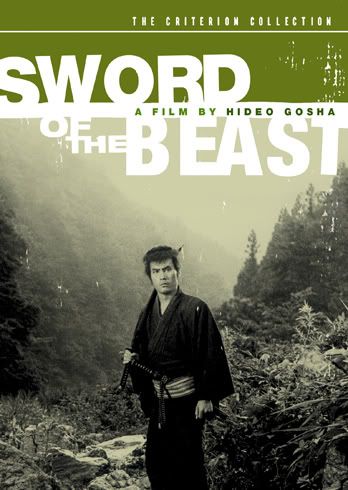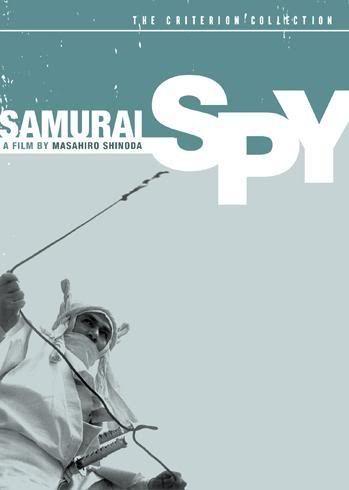 I've been looking forward to catching up with this set ever since I saw Sword of Doom at the Oak Street Cinema in Minneapolis a few years ago. A hundred or so death-by-sword-slashes/impalings later, as we walked out of the theater, my friend Mike said, "Well, that certainly was a sword of doom." That film isn't in this set, but another one with that film's director and star, the superfluously punctuated Kill!, is. Though I loved every movie in the set, I've probably either forgotten some key details about each one or I'll end up commingling them.
I've been looking forward to catching up with this set ever since I saw Sword of Doom at the Oak Street Cinema in Minneapolis a few years ago. A hundred or so death-by-sword-slashes/impalings later, as we walked out of the theater, my friend Mike said, "Well, that certainly was a sword of doom." That film isn't in this set, but another one with that film's director and star, the superfluously punctuated Kill!, is. Though I loved every movie in the set, I've probably either forgotten some key details about each one or I'll end up commingling them.
Sword of the Beast (Hideo Gosha, 1965) -- This is one of the two movies in the set with a protagonist who's haunted by a murder he committed in the name of clan stability and betterment (Kill! is the other). In fact, all four have a very strong anti-feudal, pro-individual choice theme in them. Very entertaining throughout.

Samurai Spy (Masahiro Shinoda, 1965) -- By far the most overtly stylized film of the set -- shadows, trees, etc., often obscure characters and the action, slow motion is used in several of the fight scenes, and the final confrontation is presented to us primarily in an extreme long shot that makes it pretty much impossible to tell what's going on. The film is also different from the others in its prolific use of ninjas and their weapon of choice, the throwing star. In the interview on the DVD, Shinoda talked about his fatigue with heroic swordplay violence in samurai movies, feeling that the assassination-style killings done by ninjas was more disturbing and revealing of human nature.
Kill! (Kihachi Okamoto, 1968) --
This is the goofiest movie of the set, though it settles into a groove after an uneven first 10-15 minutes. It ends up being the most satirical film of the four in that it not only criticizes the feudal society in which samurais lived, but also the very notion of samurai and their bushido code. Tatsuya Nakadai was excellent, using his eyes in such an expressive way so that you can see how he was able to be so duplicitous yet stay alive. He's a completely different character here than in Okamoto's film three years earlier, the aforementioned Sword of Doom, in which he played an irredeemable, violent narcissist.





